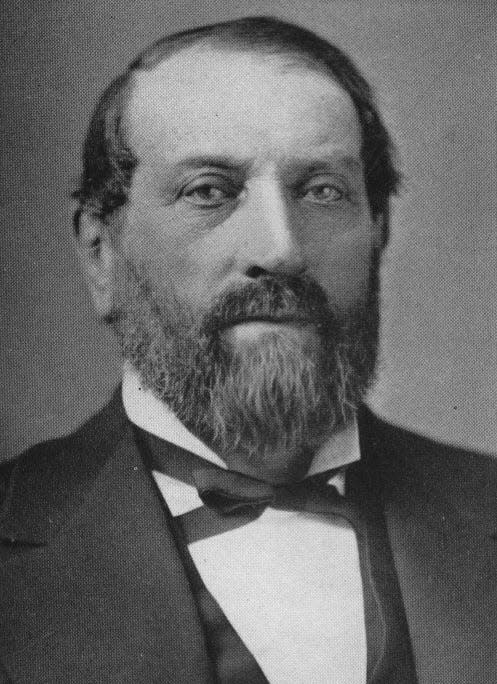These German-born cousins ran Pfister & Vogel Company tannery in Two Creeks from 1861 to 1877. Today, their early settlement is a town park.
- Oops!Something went wrong.Please try again later.
Guido Pfister (1818-1889) and Frederick Vogel (1823-1892) were born in Württemberg, Germany, where they learned the tanning business.
In the 1840s, the cousins came to America, settling first in Buffalo, New York, where they both worked in the tannery of J.F. Schoelkoff. They next moved to Milwaukee, where Vogel started a tannery in 1848, marketing his leather through Pfister’s Buffalo Leather Co. store. In 1853, the Pfister & Vogel Company was organized.
Needing a supply of hemlock tanbark (rich in tannin used to tan hides), the firm purchased 2,850 acres of timber land in Manitowoc County and 280 acres in adjacent Kewaunee County.
Piers were built at Sandy Bay and Two Creeks on Lake Michigan for shipping lumber, bark, shingles, railroad ties, cedar fence posts and other wood products to Milwaukee, Chicago and other points on the lake.

In 1861, Pfister & Vogel built a tannery, with an addition the following year, in Section 11 of the Town of Two Creeks, just a few miles north of the present-day Point Beach Nuclear Plant.
The tannery contained 290 vats, employed from 25 to 30 men, consumed 3,000 to 4,000 cords of bark annually, and produced from 20,000 to 25,000 sides of sole leather.
By 1870, about 50 horse-drawn wagons, loaded with bark, passed through Tisch Mills, bound for the tannery and pier at Two Creeks each day. A 3-mile logging train pulled by ox or horse teams was built westward from the pier for hauling bark and logs to the company’s tannery and sawmill.
In 1875, Pfister & Vogel’s 200-acre farm at Two Creeks produced 3,000 bushels of oats, 500 bushels of wheat, 400 bushels of peas, 350 bushels of carrots, 350 bushels of potatoes and a considerable quantity of hay.
Two schooners, commissioned by Pfister, were built at Manitowoc shipyards to transport the vast amount of hides, bark and other products at Sandy Bay and Two Creeks. The 146-ton Guido was built by Elias Sorenson. The 694-ton Guido Pfister was built by Hanson & Scove. Schooners and steamers brought the mail and goods to tanners, settlers and farmers in the area. Merchandise was sold at the company store.
By 1875, the village of Two Creeks included a tannery, sawmill, planing mill, general store, hotel, saloon, blacksmith shop, a wagon maker, tailor and shoemaker, butcher shop, public school, the Nero post office, telegraph office, warehouses, boarding house and about 40 houses. In 1866, at the height of its prosperity, the population consisted of 60 resident families, living mainly at the intersection of two roads (today’s Lakeshore and Two Creeks roads).

When the limited local supply of tanbark from the hemlock forests was exhausted, Pfister & Vogel sold their Two Creeks buildings and property for $16,000 in 1877.
Like the Wisconsin Leather Company’s tannery at Two Rivers, nothing remains of the Pfister & Vogel tannery at Two Creeks. The tannery burned in 1885 and a devastating fire in 1918 destroyed much of what remained of the once prosperous village of Two Creeks. Today, part of the site of the early tannery settlement is a town park.
Bob Fay is a historian and former executive director of the Manitowoc County Historical Society.
Read more:
Two Rivers tannery: Two Rivers' Tannery Road and Tannery School reflect city's early thriving industry
Lillian Chloupek:She became the first woman to serve as Manitowoc County superintendent of schools in 1920 and was re-elected to two more terms
Surprise package: Manitowoc County museum received a surprise package containing never-before-seen photos. Here's what was inside.
This article originally appeared on Manitowoc Herald Times Reporter: Manitowoc County tannery helped spark village of Two Creeks in 1800s

